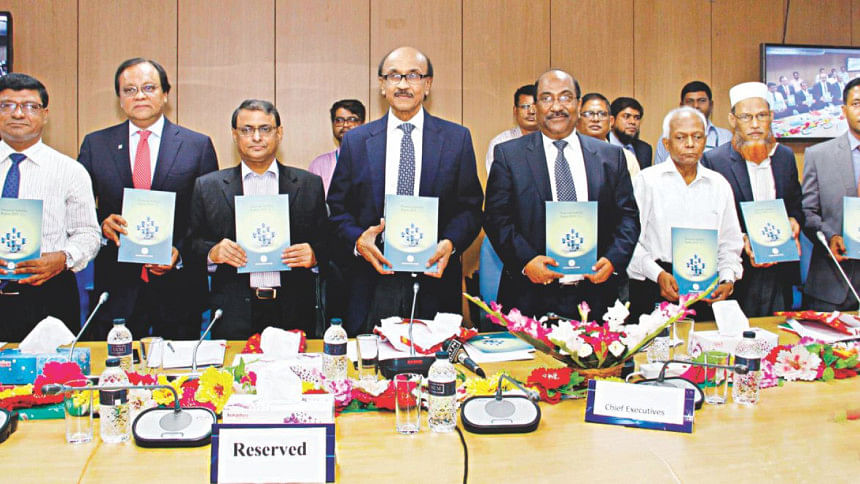Stressed loans still a major risk to banking

The banking system appeared to be stable and resilient last year but loan quality remained a concern, the central bank said in its Financial Stability Report yesterday.
“Though the gross nonperforming loan ratio decreased in 2015, concerns over the asset quality remained prevalent, as a significant amount of stressed assets was rescheduled and restructured during this period,” the 2015 report said.
The gross NPL ratio declined to 8.8 percent in 2015 from 9.7 percent in 2014, while the net NPL ratio remained at 4.2 percent, according to the report, which was unveiled by Bangladesh Bank Governor Fazle Kabir.
The banks in 2015 rescheduled and restructured a total of Tk 29,410 crore of loans, which helped bring down the overall default loan figure.
At present, the rescheduled loans constitute a significant portion of the banks' total loan portfolio. In 2015, Tk 26,093 crore in loans was rescheduled, which was 4.5 percent of the total outstanding loans.
From 2014 to 2015, the total amount of rescheduled loans shot up 50.1 percent in spite of the availability of large loan restructuring facilities.
In 2015, besides normal rescheduling the central bank gave loan restructuring facility to large borrowers.
Some Tk 16,410 crore of large loans were restructured, which is 2.8 percent of the total outstanding loans.
Though the required loan-loss provision of the banks as percentage of loans outstanding declined, a substantial shortfall in provision of state-owned commercial banks affected the banking industry's “maintained-to-required” provision ratio adversely.
While private banks performed better in terms of asset quality, capital adequacy and profitability, state-owned banks were lagging behind the industry average.
This gave rise to stability concerns to the industry and thereby necessitates for stringent and prudent supervision, according to the report.
The credit growth was higher in 2015 than in the previous year. Banks continued to invest a sizable portion of their portfolio in safer liquid instruments such as government securities, the report said.
“To make our banking system more efficient and investment-friendly, the effort to reduce default loans is ongoing,” said Kabir while unveiling the report.
For this, the internal risk management of the banks has to be intensified. To intensify monitoring, a Central Database for Large Credit or CDLC has been established, Kabir said.
Bangladesh Bank Deputy Governor SK Sur Chowdhury said one of the highlights of 2015 is the initiation of banking sector's move toward BASEL III capital and liquidity frameworks under the supervision of the central bank.
It is hoped that the transition will help strengthen the capital base and liquidity position of banks and provide adequate resilience in the face of any unexpected instability threats, he said. Another important development was the decline in gross NPL ratio in the banking industry and the increase in banks' profitability.
The BB deputy governor said considerable stress in asset quality in the form of rescheduled and restructured loans remains a concern. In this context, BB has established a CDLC for early identification of vulnerabilities of large non-financial corporate and examining remedies in case of their defaults.

 For all latest news, follow The Daily Star's Google News channel.
For all latest news, follow The Daily Star's Google News channel. 



Comments